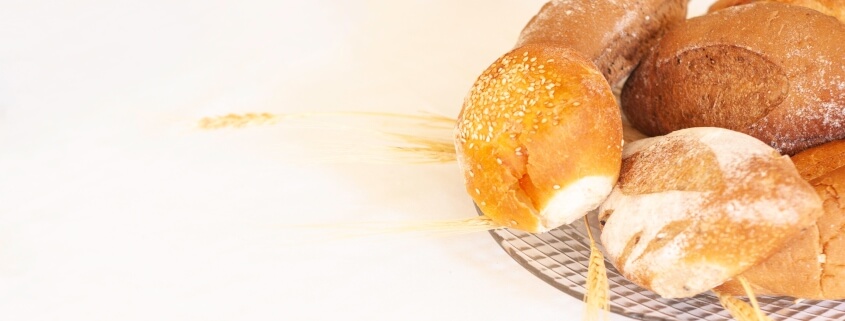As the days get shorter and the temperature drops, you may find yourself opting for more yeast-based foods than usual. Warm pastries are especially common cravings when it’s cold outside. But it can be dangerous for those with an allergy to yeast. Common foods that we all enjoy such as bread, cakes, pastries, cereals, and the vinegar you put on your fries all contain yeast.
What is Yeast Allergy?
Yeast is a type of fungus, that is naturally present in many food products such as flour and milk or used to make alcoholic beverages and baked goods such as cookies and cakes. As this microorganism is part of the fungi family, people allergic to any type of fungi are likely to be allergic to yeast. Check out our blog to learn if foods allergies are caused by genetics.
It’s important to note that yeast allergy is not the same as coeliac disease (or gluten intolerance). Coeliac disease is often confused with a yeast allergy. Gluten intolerance, due to celiac sprue, is an autoimmune disease, as opposed to an allergy. Gluten is a mixture of proteins, found in grains such as wheat, rye, and barley. It’s often added to processed foods while a yeast allergy is an immune response to yeast specifically, and not an autoimmune disease caused by gluten.
Yeast Allergy Symptoms
Symptoms of a yeast allergy can vary from person to person, but can include one or several of the following:
- abdominal swelling
- breathing difficulties
- dizziness
- joint pain
- hives
If you notice these symptoms shortly after or immediately upon consuming yeast containing foods, then it’s a good idea to get tested for yeast allergy. An allergy test can help clear up whether it’s the yeast or some other ingredient causing your adverse reaction.
List of Foods that Contain Yeast
It may surprise you just how common yeast is. There are a lot of foods in the typical western diet that contain yeast. Such as:
- aged meats and olives
- alcohol, especially beer, wine, and ciders
- anything that has been opened and stored for an extended period
- blackberries, grapes, strawberries, and blueberries
- buttermilk, synthetic cream, and yoghurt
- cereal products
- citric acid
- dried fruits
- fermented foods such as ripe cheeses and sauerkraut
- most bread
- mushrooms
- premade stocks, stock cubes, and gravies
- some baked goods, such as muffins, biscuits, croissants, or cinnamon rolls
- soy sauce, miso, and tamarind
- tofu
- vinegar and foods containing vinegar, such as pickles or salad dressing
Yeast Allergy vs Yeast Intolerance
Some people may confuse yeast allergy with yeast intolerance. However, it’s not the same thing. Yeast intolerance is less severe and only causes digestive issues such as:
- congestion
- diarrhoea
- bloating
- gas
- stomach discomfort
Testing for Yeast Allergy
You can get a diagnosis for your yeast allergy through our Ultimate Test that examines 975 items to identify triggers to common symptoms. The results will show you whether you have an allergy or intolerance and to which foods or elements.
The test consists of a hair sample examination, which has been developed by our bioresonance experts and technicians, over the last 5 years.
Treatment for Yeast Allergy
The best way to treat and manage a yeast allergy is to avoid foods that contain yeast. We recommend following an elimination diet for a complete rest. Alternatively, if your symptoms are mild, they can be managed by taking antihistamines.
Yeast Free Foods
It can be difficult to let go of certain foods and replace them with others. However, here are some common yeast-free alternatives:
- soda bread
- tamari sauce (alternative to soy sauce)
- unprocessed meat and fish
- skimmed milk
- grains such as brown rice and corn
- green vegetables
- potatoes
- squash
- beans
Well, it turns out that bread isn’t totally off the table! If you suffer from a yeast allergy, you can still enjoy bread and pizza by following yeast-free recipes. There are loads of recipes available for you to try out. Be careful this winter as you become surrounded by more and more yeast-containing foods.


